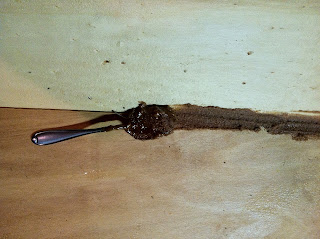I spent a lot of time, way too much time, looking into lumber for the gunwales. Every canoe building website I looked at suggested ash. Nowhere in Boulder sells ash, and after dismissing all the alternatives for one reason or another, I decided to buy lumber online. Choosing gunwales is tricky because you need wood that is strong yet pliable. The thinner you make the gunwales, the lighter the boat will be, but it won't be as robust. I need thick gunwales on the inside so that I can attach seats and portage yoke. I ended up buying 4 - 1"x4" boards of ash, each 8 feet long. It would have been nice to use one long piece of wood for the gunwale, but it's just not feasible. The dimensions I am going with are symmetrical inwales and outwales, each 13/16" in width and 1 1/4" in depth. These gunwales will be attached with epoxy and clamped on. I had to make a lot of C clamps for this purpose, so I cut a 3" PCV pipe into a bunch of pieces and cut a notch out of them. I now have 20 C clamps to hold the gunnel onto my boat. While this is a cheap and easy way to make clamps, it was also terribly messy. The plastic sawdust sticks to everything and will be around for a very long time.








.JPG)

.JPG)
.JPG)
.JPG)
.JPG)
.JPG)


